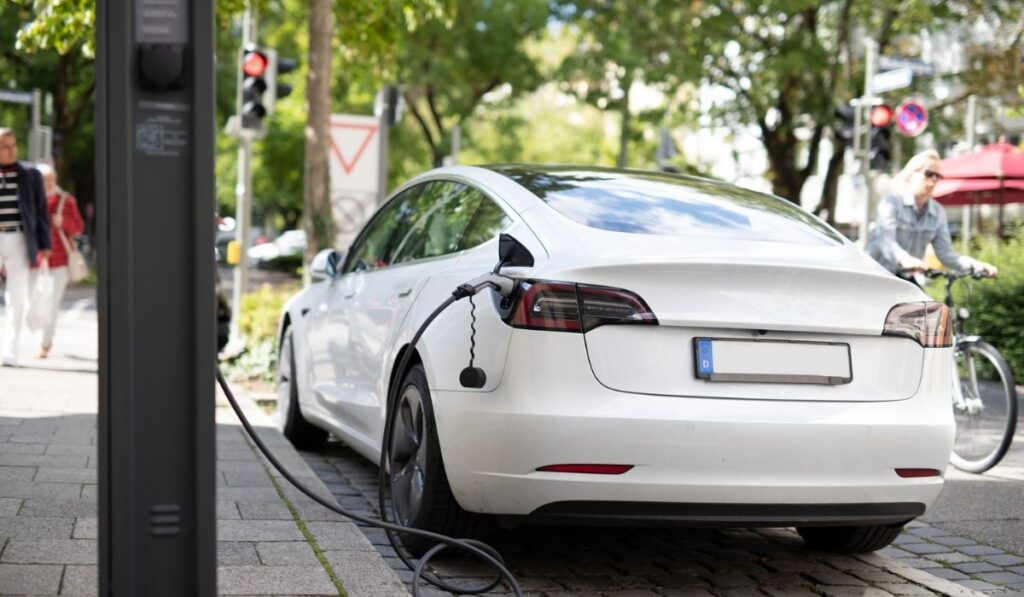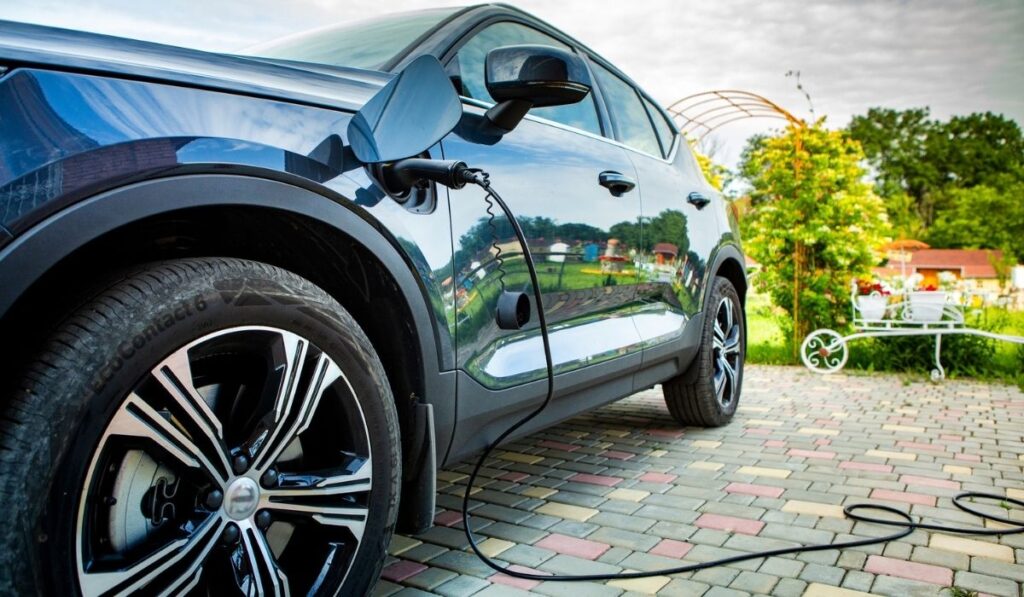Electric vehicles are an increasingly common sight on the streets, and more and more people are considering making the switch from traditional, fuel-powered cars. However, there’s still a bit of confusion regarding how electric vehicles (EVs) work and the safety measures required. One of the most common questions is: Do electric cars overheat?
Electric car components like the battery and motor can overheat, but they won’t reach the same high temperatures that are possible with traditional vehicles. You can prevent overheating by upgrading the cooling system, charging the EV properly, and parking the car in a shady location.
If you’re considering purchasing an electric car, there are some precautions to be aware of and keep in mind. Don’t be turned off by the idea just yet. Here’s everything you need to know about electric car overheating, including what happens exactly and how you can prevent it.
How Do Electric Cars Work?

The basics of EVs can be challenging to understand, especially for newcomers and prospective buyers. With various types of electric cars and different components, where do you even start?
First, some EVs use only electricity. Other options use a combination of electricity and petrol. Let’s dive in a bit further to the main groups of electric vehicles and their key components.
All-Electric Vehicles
What images come into your head when you picture an electric car? The answer is probably closest to all-electric vehicles (EVs). All-electric vehicles rely solely on an electric motor; they don’t contain an internal combustion engine.
All-electric cars contain large traction battery packs that supply the motor with power. It’s necessary to plug them into a wall outlet or charger, commonly known as electric vehicle supply equipment.
The benefit of all-electric vehicles is that they don’t emit exhaust fumes. They also don’t require standard liquid fuel components such as fuel lines, fuel tanks, or fuel pumps.
Plug-In Hybrid Electric Vehicles
Another common option is the plug-in hybrid electric vehicle, otherwise known as a PHEV. The difference between EVs and PHEVs is that the latter models contain electric motors as well as internal combustion engines (ICEs). PHEVs use batteries to supply their electric motors with power.
They can also be plugged in and charged using outlets or charging equipment. They make use of regenerative brakes, as well.
Plug-in hybrid cars also use petrol to run the standard engine. These vehicles switch from electric power to the internal combustion engines when the electric batteries are near dead.
Hybrid Electric Vehicles
The last category is hybrid electric vehicles, or HEVs. These models utilize both an internal combustion engine and electric motor. The main difference is that HEVs can’t be plugged into an outlet or any charging equipment. Instead, the batteries are charged via regenerative braking and the standard engine.
HEVs have the benefit of extra power from the electric motor. This allows for a smaller engine. The battery, electric motor, and internal combustion engine work in tandem for better gas efficiency and performance.
Are Electric Car Motors Cooled?
Yes, electric car motors and the various components are cooled, since the battery of an electric car needs to remain within certain temperature ranges. The battery temperature is typically maintained with a battery management system, or BMS.
Most electric vehicles also feature liquid-cooling systems. These systems use water-glycol to circulate coolant through various pipes to cool the battery and various other components. This system is similar to how a standard combustion engine is cooled.
Generally speaking, the cooling system will activate to manage temperature levels, ensuring your electric vehicle isn’t too hot or too cold. However, these systems only work when the car is in working order.
Can Electric Cars Overheat?
Yes, electric cars can overheat and reach temperature danger zones. However, these temperature ranges are still not as high as those with a standard internal combustion engine.
Generally speaking, anything that produces energy will also produce heat. When the battery, motor, and other components are in use, they’ll produce heat and reach higher temperatures. These temperature ranges can vary depending on the circumstances — driving conditions, climate, and other factors.
What Happens When an Electric Car Overheats?
There are a few risks associated with an electric car overheating or reaching temperature danger zones. You might experience battery damage, less range, additional damage, or other complications when an electric car overheats.
One of the primary concerns with overheating is damage and deterioration to the electric car’s battery. Batteries normally deteriorate with time, but high temperatures can reduce these timeframes. High temperatures can cause malfunctions over time to the battery and other components of an electric car.
Another concern is the potential for fires. Although unlikely, there have been reports of electric cars catching fire in some circumstances. Overheating might be one of the culprits behind fires and other complications.
Electric cars can also lose range when put under high temperatures. Some EV models might lose around 20% of their range in temperatures above 95 degrees Fahrenheit. This varies depending on the model, circumstances, components, and other factors.
How to Prevent EVs From Overheating

Although electric cars don’t reach the temperature ranges of a standard vehicle, they can still overheat and run into complications. Thankfully, there are some precautions you can take to prevent or avoid overheating issues.
Upgrade the Cooling System
One of the ways you can prevent an electric car from overheating is by upgrading the cooling system. There are various cooling options out there, including fan cooling, air cooling, phase change material, and liquid cooling.
However, fan cooling, air cooling, and phase change material aren’t suitable for electric cars. The best cooling upgrade for electric cars is liquid cooling.
Keep in mind that not every electric car model will be compatible with the same upgrades, and your mileage will vary depending on the circumstances.
Know When to Charge
Knowing the right times to charge an electric vehicle is crucial to its health and longevity. Charging an electric car incorrectly can cause it to heat up and accrue damage over time.
It might be best to keep electric car batteries between 20% and 80% charge levels. If you aren’t traveling long distances, 70% might be the sweet spot. It’s not necessary to charge your electric car all the way to 100% every time.
However, your experience will vary depending on the make, model, and circumstances. Be sure to read the manufacturer’s guidelines or owner’s manual for the most accurate information possible.
Be Careful About Driving
Be sure to practice safe driving protocols when using an electric vehicle. Some models have special features or modes that improve performance. These modes and features can regulate battery temperature and keep it out of the danger zone.
You should consider using these modes or similar features when commuting and on long trips. Be sure to consult the manufacturer or your owner’s manual for the most accurate information.
Be Careful About Where You Park Your Vehicle
It’s very important to store your vehicle properly when it’s not in use. Proper storage techniques are even more important when you’re not using the vehicle for long periods of time.
You might want to disconnect the battery and keep it out of the heat. It’s also been suggested to keep the charger connected so the BMS can continue to work properly. However, that might not work for your make, model, or circumstance.
Another tip is to park your vehicle under the shade or in a covered garage. Sun covers (on Amazon) are another viable consideration. Generally speaking, if the temperatures are above 80 degrees Fahrenheit, you should take proper measures to ensure the safety and longevity of your vehicle and battery.
Keeping Your EV Cool
As you’ve now learned, it’s possible for electric vehicles to overheat. They won’t reach the temperature ranges of a standard internal combustion engine, but they can still suffer from damage if left untreated.
If you can, upgrade the cooling system in your electric vehicle. Upgrading the cooling system is one of the easiest ways to reduce and prevent overheating.
Alternatively, be sure to charge your car according to the manufacturer’s instructions. Use any driving features or modes that can help your car manage the internal temperature.
Finally, be sure to park your car in the shade or use a sun protector when possible. Following these tips will ensure your electric vehicle is less likely to overheat and suffer unnecessary damage.
